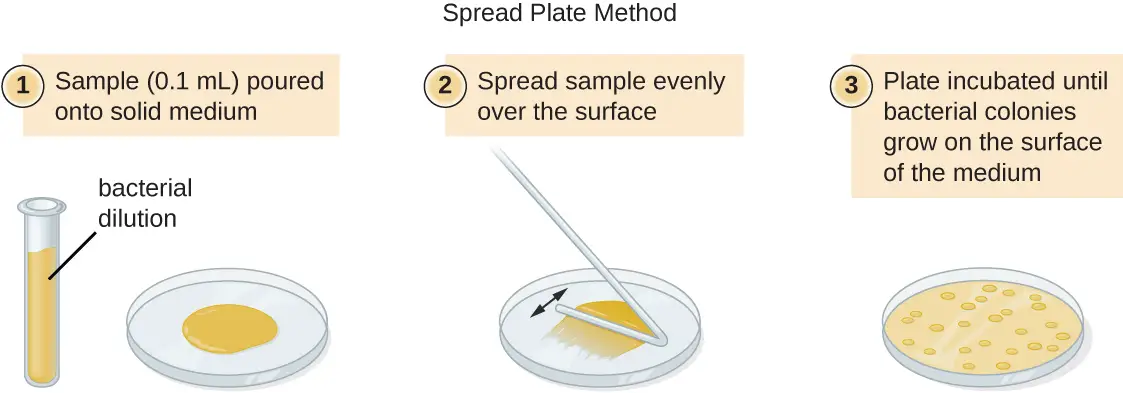Spread Plate Technique: Principle, Procedure and Results

Spread plate technique is a method employed to plate a liquid sample for the purpose of isolating or counting the bacteria present in that sample. A perfect spread plate technique will results visible and isolated colonies of bacteria that are evenly distributed in the plate and are countable. The technique is most commonly applied for microbial testing of foods or any other samples or to isolate and identify variety of microbial flora present in the environmental samples e.g. soil.
To get optimum result from spread plate technique students must be careful;
- To make accurate dilutions using pipettes (master serial dilution technique).
- To apply a balanced spread technique using a glass spreader to spread the inoculum evenly on the agar surface.
- To respect the necessary “short” time interval between agar inoculation and spreading.
In this method the substance to be tested if not in liquid form,is grinded and dissolved in suitable liquid medium. The sample is then diluted in 10 fold serial dilutions and plated in appropriate medium.
Following incubation the number of colonies present in the plate are counted. Assuming that each organism gives a single colony the number of total bacteria present in a sample are calculated.
Requirements:
- Glasswares: screw capped test tubes, sterile pipettes, glass spreader
- Medium: Plate count agar or Nutrient agar
Procedure for Spread Plate Technique :
A: Serial Dilution
- Prepare a series of at least 6 test tubes containing 9 ml of sterile distilled water.
- Using a sterile pipette ,add 1ml of sample in the first tube of the set.Label it as 10-1
- Mix the contents well by swirling the tube upside down few times.
- From the first tube, take 1ml of the sample and transfer to second tube. Label it as 10-2.
- Repeat the procedure with all the remaining tubes labeling them until 10-6.
B. Plating
- Pipette out 0.1 ml from the appropriate desired dilution series onto the center of the surface of an agar plate.
- Dip the L-shaped glass spreader (hockey stick) into alcohol.
- Flame the glass spreader over a bunsen burner.
- Spread the sample evenly over the surface of agar using the sterile glass spreader, carefully rotating the Petri dish underneath at an angle of 45oat the same time.
- Incubate the plate at 37°C for 24 hours.
- Calculate the conlony forming units (CFU) value of the sample. Once you count the colonies, multiply by the appropriate dilution factor to determine the number of CFU/mL in the original sample.
Calculation of result:
CFU/ml = (no. of colonies x dilution factor) / volume of culture plate
For example, suppose the plate of the 10^6 dilution yielded a count of 130 colonies. Then, the number of bacteria in 1 ml of the original sample can be calculated as follows:
Bacteria/ml = (130) x (10^6) = 1.3 × 10^8 or 130,000,000.
